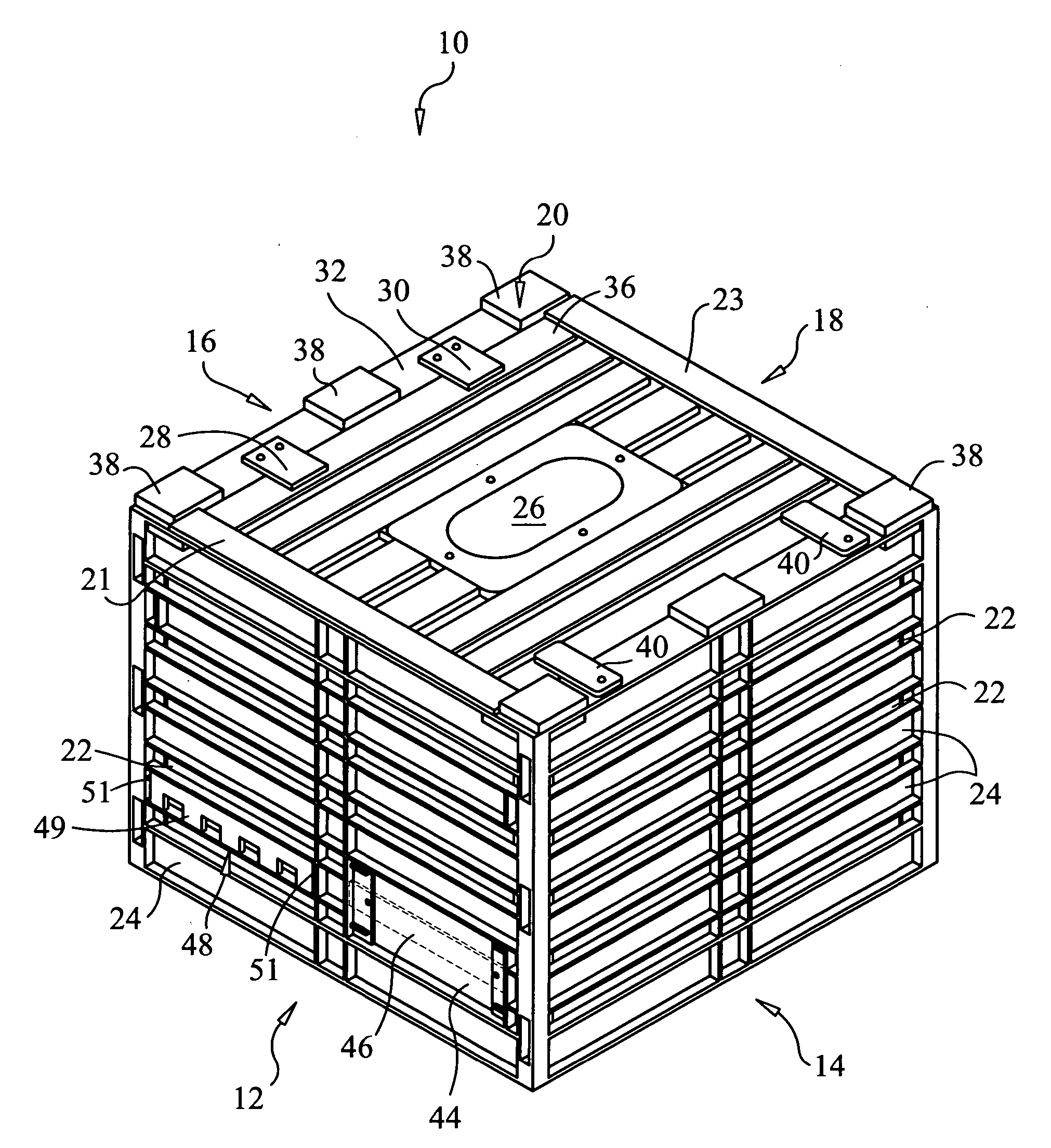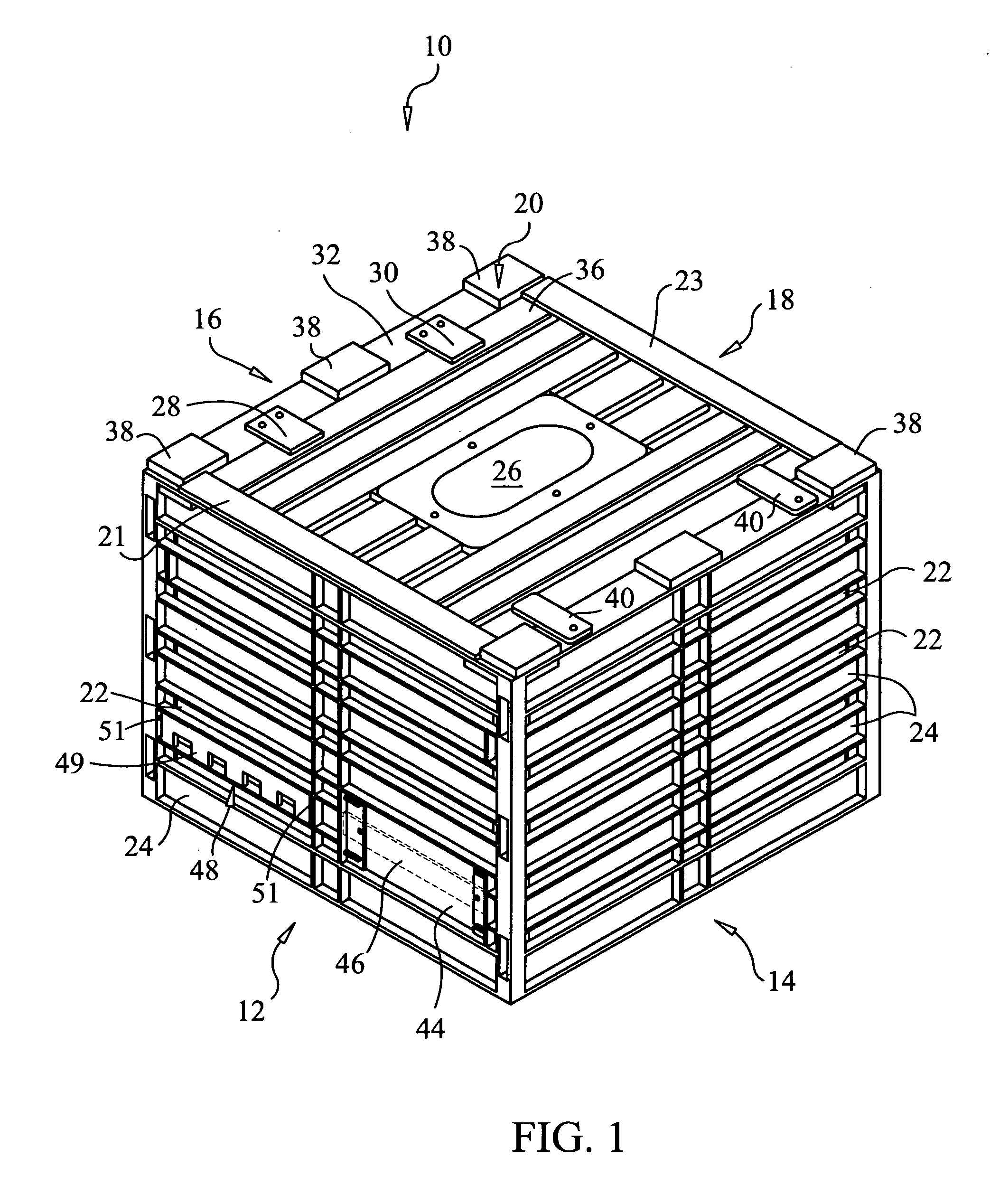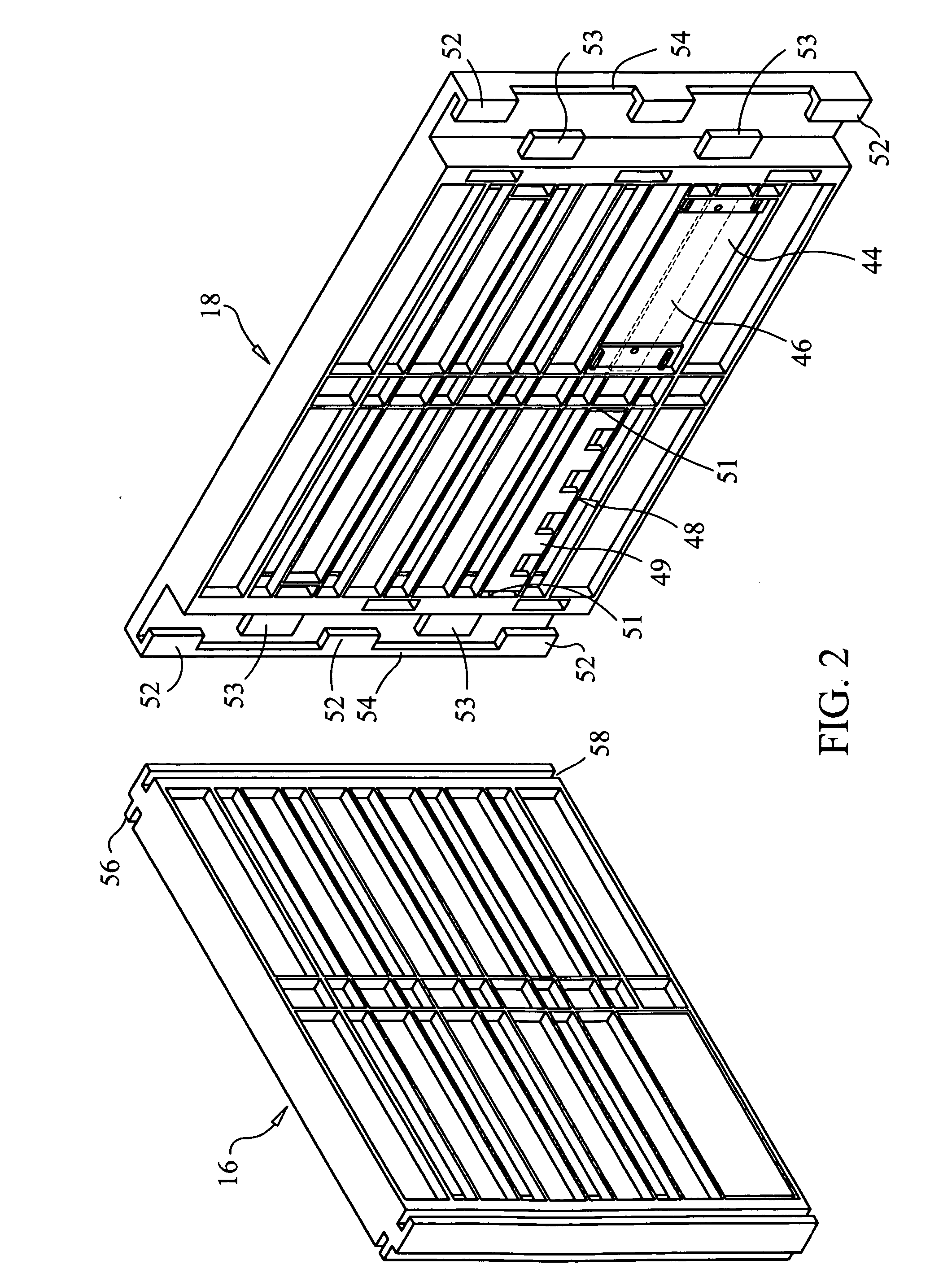Crustacean trap
a technology for crustaceans and traps, applied in the field of crustacean traps, can solve the problems of difficulty in escaping, creating potential environmental hazards, and the hatch position of crustaceans in these traps is typically too high for crustaceans to escap
- Summary
- Abstract
- Description
- Claims
- Application Information
AI Technical Summary
Problems solved by technology
Method used
Image
Examples
Embodiment Construction
[0015] Referring now to the drawing figures in which like reference designators refer to like elements, there is shown in FIG. 1 a crustacean trap constructed in accordance with the principles of the present invention and designated generally as 10. As shown in FIG. 1, trap 10 is a generally cube-like structure having four adjacent side, i.e. front side 14, left side 12, right side 18 and rear side 16, and a top cover 20, all of which enclose a defined interior space. Typically, the bottom of trap 10 is open but is adapted to include a slab of cement, which can be formed in place to comprise the floor of the trap. The cement provides weight to the trap allowing it to sink below the water surface.
[0016] The crustacean trap 10 of the present invention is formed by four molded polymer sides (12, 14, 16 and 18) and a hinged top cover 20. Once the four sides are assembled, the bottom of trap 10 is formed by placing the assembled sides on a surface and filling the bottom of the trap with...
PUM
 Login to View More
Login to View More Abstract
Description
Claims
Application Information
 Login to View More
Login to View More - R&D
- Intellectual Property
- Life Sciences
- Materials
- Tech Scout
- Unparalleled Data Quality
- Higher Quality Content
- 60% Fewer Hallucinations
Browse by: Latest US Patents, China's latest patents, Technical Efficacy Thesaurus, Application Domain, Technology Topic, Popular Technical Reports.
© 2025 PatSnap. All rights reserved.Legal|Privacy policy|Modern Slavery Act Transparency Statement|Sitemap|About US| Contact US: help@patsnap.com



